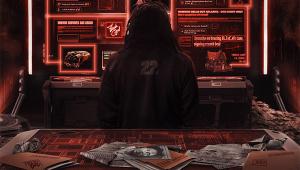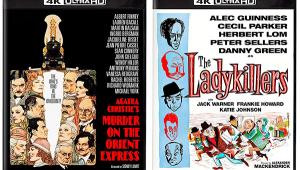The S+V Interview: Chris Robinson Page 4

photo: Sorrell Schneider
You could just hear some people going, "What, I can put 79 minutes on this CD? Then that's what I'm gonna do." It doesn?t necessarily make for a good record.
Exactly. And now that things seem to be swinging the other way to people wanting individual tracks, here's my whole trip about it. I understand where younger people in the business want to get rid of making albums. But you can't stop me from making records.
If I feel that I'm best represented every 18 months by this group of songs I've been working on with this particular group of people who I recorded them with, then that is what is happening. That's what I'm putting out. You cannot take away the idea that an album is the way to present my body of work at that period of time.
If you as the artist want to present your work that way, then that's the way you gotta do it. My view as the listener is: If you give me something at a certain length in a certain order, then that's the way I should deal with it.
That's the trip I want you to go on, man. The sequencing thing is key, and it's something I fought with labels about for years.
Speaking of labels, here's something that really opened my eyes. When I was working on the packaging and the artwork for The Southern Harmony and Musical Companion [1992] and Amorica [1994] with our girl at Reprise/Warner Bros., I brought in all the resources myself for them to get the clearances since I didn't know how to do it on my own. And she told me, "You have no idea how many bands just don't care. We make album covers for some bands who never even come to this building. They look at them when we're done and they'll say yes or no, but they don?t even come in with their own concept. The only other artist who comes in this building besides you for every album is Neil Young. He comes in here every time." I'm like, "Alright, cool!" [laughs]
Very cool. As you can see, I brought with me some LPs I thought you might have in your own collection. Let's start with Moby Grape's self-titled 1967 debut album, the mono version. [The cover for Moby Grape gained notoriety because it showed a picture of the band with drummer Don Stevenson's middle finger extended; it was airbrushed out of later pressings.]
Check out [guitarist] Jerry Miller there! Miller has sat in with us before, because we play "Hey Grandma" every now and then, and it's on this record. Yeah, I also have that record in mono. I was always into '60s music, especially when I was a teenager. I have this one, too [picks up Moby Grape's 1968 follow-up record, Wow]. This one had that crazy song in 78 [rpm, "Just Like Gene Autry: A Foxtrot"].
I could never play that track at the right speed because I didn't have a record player that did 78 back when I first bought it!
Now imagine explaining that one to a record dude - that your album has a song like that on it! [laughs] By the way, that's real punk rock right there. Make a record where you have to change the speed at the end of it!
Next, from our good friends the Rolling Stones, I have the columbia Records version of [1972's] Exile on Main St.
You don't have the 12 postcards [shot by Norman See? ] in there, do you?
No, I don?t travel with those. They're at home.
Smart. When the Crowes first came out and the whole idea was that we were "ripping off" the Stones - come on! Of course we know who the Stones were and what they're about! But what you don't know is that my Dad was on Monument Records in the late '50s as a folk singer. [Stan Robinson charted one hit, ?Boom-A-Dip-Dip,? in 1959.] So I grew up with Robert Johnson, Leadbelly, Bill Mon- roe, Jimmy Driftwood, and the Staple Singers. The point is, the same inspiration the Stones and others had with roots music is not lim- ited to people like Keith Richards, Mick Jag- ger, Robbie Robertson, Richard Manuel, Jerry Garcia, and Robert Hunter. Everyone can pick up on it and understand the echoes of ex- pression that are there. We do the same shit - we have the same level of joy and loss and fear and pain, all of it. Why would our reality in terms of how we want to create music be any different?
- Log in or register to post comments










































